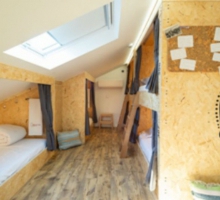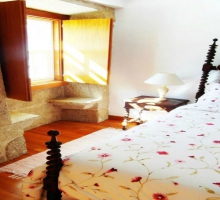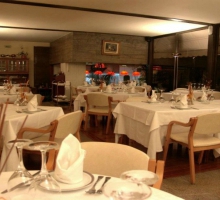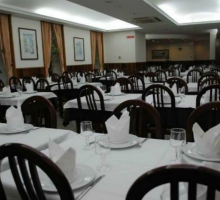The history and origins of the development of Valença are closely connected with the presence of king D. Sancho I in the region, in the late XII century. As a result of the marriage cancellation between Afonso IX of Leon and Infanta Teresa, D. Sancho`s daughter, D. Sancho decided to start a succession of occupation attempts to the towns of Tui and Pontevedra, in Galicia. These attempts rekindled old conflicts, and because of that, Valença (its name then was CONTRASTA) became an important place, both because its strategic position what allowed to watch the Galician attacks, and because of the importance of the Roman Way to Santiago de Compostela to which the pilgrims and travelers from all over Peninsula Ibérica (Iberian Peninsula) converged. It was probably this combination of factors that led D. Sancho to grant his first charter and to build a defensive wall, besides the natural border fixed by the river Minho. According to reports of that time, the delimitation of “Contrasta” had a strong impact, putting on it a certain solemnity and meaning. There were two distinct rhythms of development – inside and outside the walls. Inside the walls could be characterized as being the urban area, where the most important buildings and services were located and where the political and military power were settled; outside of the walls were settled the people who lived by rural and agricultural works.
On the 15thAugust 1217, king D. Afonso II granted charter to “Contrasta”, which covered some privileges to the inhabitants, such as the exclusive dependence of the king, exemption of taxes throughout the kingdom, some legal advantages and house protection, among others. In this way, it was intended to develop more and more this town, which assumed, at that time, an intensive status in the relationship between Minho and Galicia regions. As a result of the wars with Leon, the oldest town of “Contrasta” was partially destroyed in the thirteenth century (1211/1212). In order to develop the town, D. Afonso II granted a new charter renewing the privileges that had been granted by D. Sancho I. In 1262, “Contrasta” changes its name to Valença by order of D. Afonso III. Besides changing its name, all the inhabitants started living inside the walls, as a result of the deep reform of the military system of the village commanded by king Afonso III.
We do not know the exact configuration of the fortress, but still is possible to detect some traces. One of the examples is Porta do Açougue, on the west side, where we can see a medieval coat of arms. At this time, Valença had a Mayor and a permanent military post as protection from the Leonese attempts. Over the decades and centuries, Valença continued to benefit from a special attention by the political and military authorities, due to the geostrategic importance. However, it was only in the late 50s of the XVII century, during the years of Restauration War that occurred the first efforts to strengthen the wall of Valença, one of the most exposed to the Spanish attacks – in 1657 and 1660 there were serious attempts to take the fortress.
The fortress project was made by a french militar engineer, Miguel Lescole, which was never approved by the War Council. Manuel Pinto Vilalobos, a disciple of Miguel Lescole, took advantage of his project and started the works in 1691. The works would be largely completed in 1700.
Location: Valença
On the 15thAugust 1217, king D. Afonso II granted charter to “Contrasta”, which covered some privileges to the inhabitants, such as the exclusive dependence of the king, exemption of taxes throughout the kingdom, some legal advantages and house protection, among others. In this way, it was intended to develop more and more this town, which assumed, at that time, an intensive status in the relationship between Minho and Galicia regions. As a result of the wars with Leon, the oldest town of “Contrasta” was partially destroyed in the thirteenth century (1211/1212). In order to develop the town, D. Afonso II granted a new charter renewing the privileges that had been granted by D. Sancho I. In 1262, “Contrasta” changes its name to Valença by order of D. Afonso III. Besides changing its name, all the inhabitants started living inside the walls, as a result of the deep reform of the military system of the village commanded by king Afonso III.
We do not know the exact configuration of the fortress, but still is possible to detect some traces. One of the examples is Porta do Açougue, on the west side, where we can see a medieval coat of arms. At this time, Valença had a Mayor and a permanent military post as protection from the Leonese attempts. Over the decades and centuries, Valença continued to benefit from a special attention by the political and military authorities, due to the geostrategic importance. However, it was only in the late 50s of the XVII century, during the years of Restauration War that occurred the first efforts to strengthen the wall of Valença, one of the most exposed to the Spanish attacks – in 1657 and 1660 there were serious attempts to take the fortress.
The fortress project was made by a french militar engineer, Miguel Lescole, which was never approved by the War Council. Manuel Pinto Vilalobos, a disciple of Miguel Lescole, took advantage of his project and started the works in 1691. The works would be largely completed in 1700.
Location: Valença








